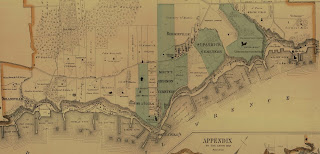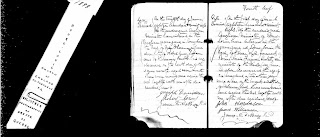 |
| Father Charles-Emile Gadbois 1906 - 1981 |
Father Charles-Emile Gadbois was a publisher, composer born in St-Barnabe-Sud, near St-Hyacinthe, Quebec on 1 June 1906 and died in Montreal 24 May 1981.
He studied piano with Telesphore Urbain ( organist at St-Hyacinthe Cathederal),
violin with Maurice Onderet, and harp with Juliette Drouin.
After his orination as a priest in 1930 Father Gadbois began teaching, and for five years was the director of the band at the St-Hyacinthe Seminary.
In 1937, influenced by the Congres de la langue francaise held in Quebec City, Gadbois established La Bonne Chanson to assemble and publish the best French and French-Canadian songs. A tireless promoter of 'la bonne chanson,' he organized festivals, contests, and congresses, including those at the Montreal Forum in 1942 and the Quebec Coliseum in 1943 and in Lewiston, Maine in 1944.
La Bonne Chanson is a publishing company dedicated to the dissemination of French and French-Canadian songs of quality. It was founded in St-Hyacinthe, Quebec after the 1937 French Language Congress in Quebec City, which emphasized the value of song as a vehicle for the preservation of culture and language.
Father Charles-Emile Gadbois, the company's founder began publishing the words and music of songs of France and Quebec in albums. Eleven albums (550 songs) were published in this manner. La Bonne Chanson also prepared the series Madeleine et Pierre for young people and adapted several programs of solfege and singing for the schools: La Bonne Chanson a l'ecole, a collection of 50 sacred and secular songs for Christmas; Chants pour le temps des Fetes; and finally Cent plus belles chansons. A collection entitled Vingt choeurs a voix egales, enjoyed considerable success, as did books of accompaniments for many songs.
In 1939, for the Bluebird label of RCA Victor, Father Gadbois produced some 50 78's for the record series issued under the name La Bonne Chason. Performers for the series included Francois Brunet, P.-E. Corbeil, Jeanne Desjardins, Jules Jacob, Marthe Letourneau, the Alouette Vocal Quartet, the Bonne Chanson Vocal Quartet, David Rochette, and Albert Viau.
The radio program 'Le quart d'heure de la Bonne Chanson,' on CBC and CKAC in Montreal 1939 - 1952, contributed to the popularity of the heritage of song.
Les Amis de la Bonne Chanson founded in 1942, also assisted in the promotion and distribution of the published songs.
He composed some 60 songs and wrote about 20 folk song arrangements. In collaboration with Conrad Letendre, he launched Musique et Musiciens, a review which appreared monthly 1952 - 54. He received the golden cross of St-Jean-de-Latran in May 1943 for his dedication to 'la bonne chasson'.
His papers are held at the St-Hyacinthe Seminary. The Foundation Abbe-Charles-Emile-Gadbois, established to 'perpetuate his heartfelt wish to instill a love of song in all levels of society,' awarded its first scholarships in 1988.
Finding out Father Charles-Emile Gadbois is my 1st cousin twice removed is attributed to a cousin I met through Wiki Tree that shared a photograph of Father Gadbois with me. We knew he was related to the Gadbois' of St. Hyacinthe but we didn't know how, a little sleuthing has turned up a heartwarming history of a kind and generous man who we are both very proud to call our cousin.






